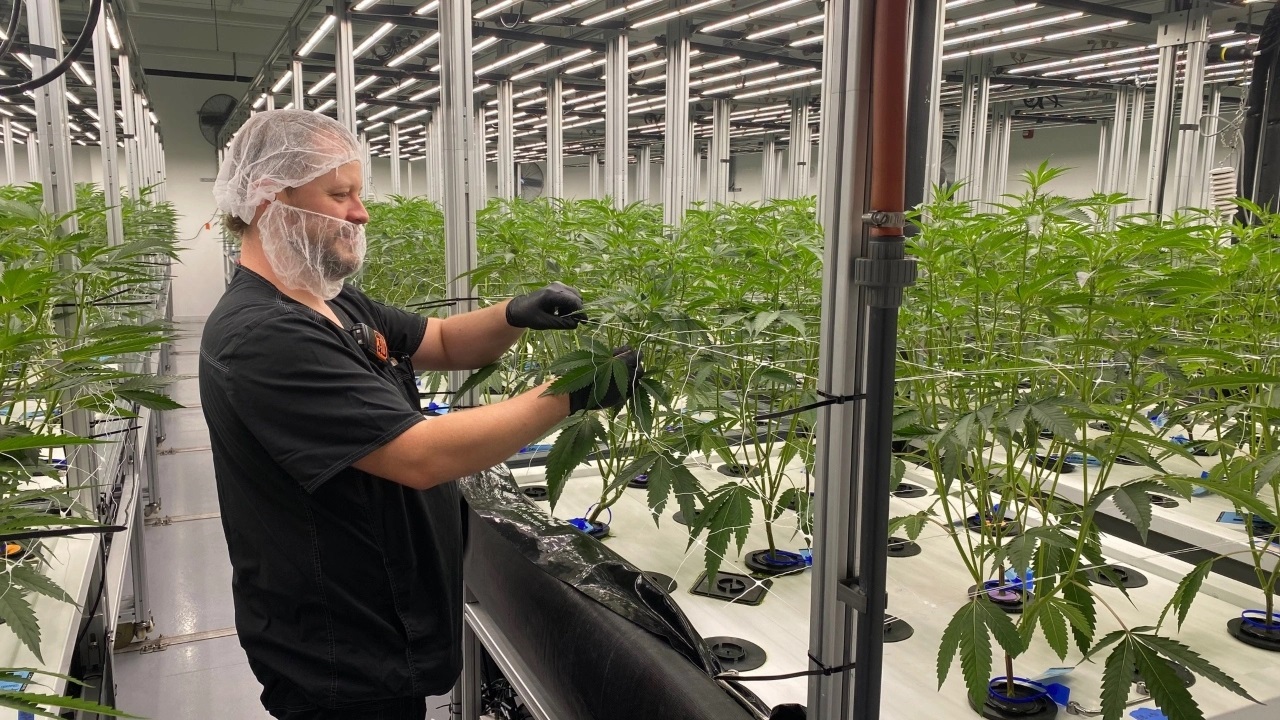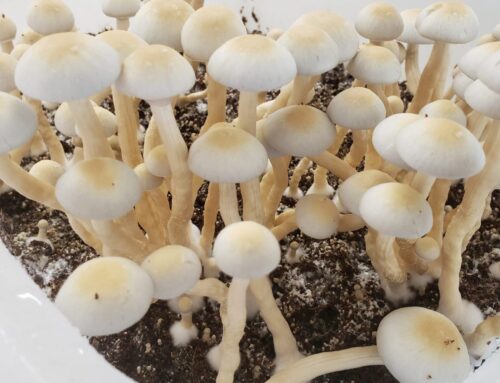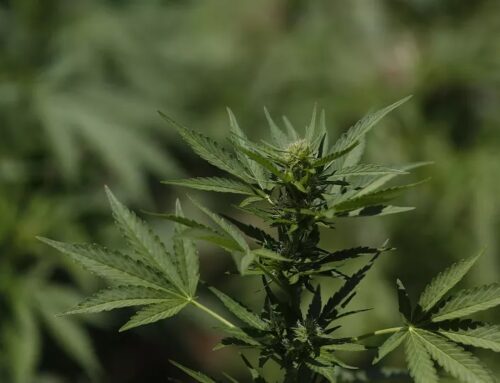Cannabis is typically grown in a medium, often a soilless medium such as rockwool or coco coir, or in living soil.
Aeroponic cultivation eliminates that growing medium entirely: Exposed, hanging plant roots are misted directly with a solution of water and nutrients.
Combined with careful environmental controls, the method can accelerate crop growth.
“The speed is basically unbeatable,” said Jim Strain, director of cultivation for Cranbrook, British Columbia-based cannabis producer Dycar Pharmaceuticals.
“I’ve done them all side by side, I’ve tried every system, and aeroponics is incredibly vigorous when done right and when the system is healthy.”
Aside from faster growth and increased output, aeroponic marijuana producers cite several other points in the growing method’s favor, particularly:
- Potentially lower labor costs.
- Lower material costs.
- High-quality cannabis bud.
On the other hand, aeroponic growers must overcome several challenges, including:
- Affording steeper upfront equipment costs.
- Learning new technology and a new way to grow.
- Paying fastidious attention to cleanliness and sanitation.
No data exists to shed light on how many commercial marijuana growers use aeroponics instead of growing in a medium, but it’s clear that aeroponic cultivation remains unusual.
Chris Wrenn is vice president of Americas sales at Santa Clara, California-based AessenceGrows, which supplies aeroponic hardware and software systems for cannabis and other crops.
Wrenn said AessenseGrows supplies 50-60 marijuana cultivators worldwide, including Dycar.
“If you’re a cultivator that’s looking to grow tons of product (and) be the low-cost provider – that’s not our niche,” Wrenn told MJBizDaily.
“Our niche is the people that are looking to grow the best cannabis out there,” he added.
“And our cultivation partners generally execute on that model.”
The aeroponic advantage
For commercial producers, the most obvious upside of aeroponic cultivation is rapid plant growth.
Tim Bogaert is director of cultivation for Jackson, Michigan-based aeroponic marijuana producer and retailer Rair Co., another AessenceGrows client.
After cloning, Bogaert said, Rair’s plants require only one week of vegetation before moving to the flowering phase.
That’s much faster than the four- to eight-week vegetation periods required at non-aeroponic growers where Bogaert previously worked, he said.
AessenceGrows’ Wrenn said the company’s aeroponic clients generally achieve higher THC content “than the same cultivar grown in coco and rockwool.”
“I’m not a THC geek, I’m more of a terpene geek myself, but terpenes tend to run with THC – so if you’ve got high THC, you’ve got high terps, too,” Wrenn said.
Dycar’s Strain said that flushing nutrients out of aeroponically grown cannabis can be achieved “within an hour,” contributing to clean-burning marijuana bud.
He said Dycar prides itself on “really clean, gray, light-gray ash that just falls off the end of the joint.”
Strain said aeroponics also offers operational cost savings over time by reducing material expenses.
“We have no truckloads of (growing) medium coming in or leaving the facility,” he said, adding that the company also saves on the cost of disposal.
Labor costs are another potential area of savings for growers using an automated aeroponics system.
“We automatically replenish our water, we can automatically flush – all these things are driven by our software,” said AessenceGrows’ Wrenn.
“There’s no hand-feeding anymore,” Rair’s Bogaert said.
For a traditional, non-aeroponic cultivation operation, he believes Rair would need between two and three times as many staff.
The challenges of aeroponics
Faster plant growth, prime cannabis flower and lower operating costs are obvious wins for any marijuana cultivator.
So, why does aeroponic cultivation remain so rare?
“I think it’s because of the upfront costs,” Bogaert said.
“And a lot of people aren’t experienced with it and are not prepared to learn a whole new way to do things. … But those upfront costs, I’m sure, are very prohibitive.”
Bogaert said AessenceGrows’ control software sends alerts about changing cultivation variables such as pH levels, lighting intensity, nutrient concentration and water conditions.
There’s a learning curve for new aeroponic growers, he said, but “it’s not a long learning curve.”
However, learning a new way to grow requires open-mindedness, Bogaert said.
Some less-experienced growing personnel have done well at Rair, he said, “because they don’t come in here entrenched with their own ideas, thinking, ‘You’ve got to do it this way.’
“Because this is nothing like anything else before.”
Keeping aeroponic systems clean
Pest and pathogen control is always a concern for marijuana cultivators, but successful aeroponic growing requires paying particular attention to sterility and cleanliness.
Aeroponic systems such as AessenceGrows’ rely on water recirculation, explained Strain, Dycar’s cultivation director – if they didn’t, “you would go through more water than any other grower out there, for sure.”
Strain said such recirculating water systems can be susceptible to plant pathogens, including pythium.
If a plant “in your system has a pathogen, puts it into your water system and you bring that back and recirculate it over your plants, now you’ve spread the disease very rapidly,” he said.
In 2019, Dycar’s B.C. aeroponic facility faced an outbreak of black root rot, later described by a researcher as the first confirmed outbreak of the fungus in marijuana plants.
Strain said the outbreak affected one row of plants in a grow room used for test crops.
Dycar decided to cull the entire room as a precautionary measure, resulting in the loss of about 200 plants and a small amount of equipment.
“We decided to discard a couple pumps and things that are difficult to clean the nooks and crannies,” he said.
“But, in general, all of the equipment was cleanable, and we used a fungicide on it to make it usable again.”
Strain attributed the outbreak to a contaminated plant brought into the facility.
“So immediately we stopped doing that, and my recommendation to any growers is, don’t bring in clones. … Clones come in, and you have a chance of bringing in a pathogen, period.”
“I’m a big fan of clean-room cultivation styles,” AessenceGrows’ Wrenn said, “and all of our successful cultivation partners are executing on that, the cleaning at the end of the cycles. … I’ve had people that have not been able to keep their facility clean, that have not been as successful.”
Rair’s Bogaert said that running cleaning solutions through the aeroponic system’s plumbing isn’t enough: Physical brushing is required to clean out built-up biofilm from root exudates and other plant material.
“As long as we have healthy stock, our cleaning procedures keep these machines totally clean,” he said.
Painstakingly maintaining an ultra-clean production environment has its advantages.
“We have zero microbials, every time,” Dycar’s Strain said.
“We don’t have to irradiate our cannabis, ever.”
Strain said aeroponic production is well-suited to cultivators trying to meet European Union Good Manufacturing Practice requirements or similarly stringent conditions.
“Our results are extraordinarily repeatable,” he said.
Still, those results require know-how: Strain said cannabis producers contemplating aeroponics should make sure they have staff who understand the system, because despite the automation, “it’s not set-it-and-forget-it.”
Strain likened aeroponic cultivation to a Ferrari.
“But if you want a Ferrari grow system,” he said, “you should have a Ferrari mechanic and a Ferrari driver, too.”
Souce:







